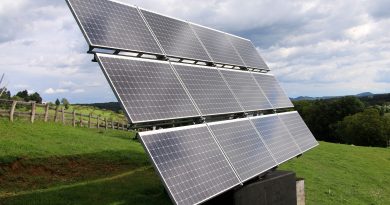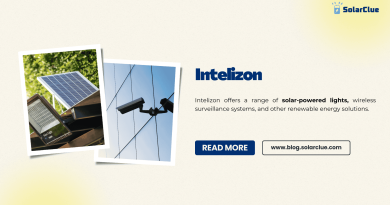How Much Solar Panels Do I Need?
Determining the optimal number of solar panels for your home or business is essential for maximizing energy production and ensuring cost-effectiveness. This guide will walk you through the factors that influence solar panel requirements, such as energy consumption, panel wattage, roof space, and location. We’ll also provide step-by-step instructions to help you estimate the number of panels you need and offer tips for optimizing solar energy output.
Table of Contents
- 1 Understanding Energy Consumption Patterns
- 1.1 Calculating Solar Panel Wattage Based on Energy Needs
- 1.2 Assessing Roof Suitability and Available Space
- 1.3 Considering Factors Like Shading and Orientation
- 1.4 Balancing System Size with Budget and Incentives
- 1.5 Using Online Solar Calculators and Design Tools
- 1.6 Optimizing Solar Panel Placement for Maximum Efficiency
- 1.7 The Role of Battery Storage in Solar System Sizing
- 1.8 Government Incentives and Rebates for Solar Panel Systems
- 1.9 Potential Challenges and Solutions in Solar Panel Sizing
- 1.10 The Impact of Net Metering on System Design
- 1.11 Long-Term Energy Consumption Projections and System Adaptability
- 1.12 Conclusion
- 1.13 Estimated Number of Solar Panels Based on System Size and Panel Wattage
- 1.14 FAQ Section
Understanding Energy Consumption Patterns
Importance of Energy Consumption Data:
- Monthly and Annual Usage: Knowing your average monthly and annual energy consumption is the first step in determining how many solar panels you need. This information is usually available on your electricity bills.
- Kilowatt-Hours (kWh): Energy consumption is typically measured in kilowatt-hours (kWh). Your goal is to produce enough kWh with solar panels to cover your usage.
Example:
- If your home uses 900 kWh per month, you’ll need a solar system that can generate approximately the same amount of energy.
Calculating Solar Panel Wattage Based on Energy Needs
Understanding Panel Wattage:
- Wattage of Solar Panels: Solar panels come in different wattages, typically ranging from 250W to 450W. The higher the wattage, the more electricity a panel can produce.
Step-by-Step Calculation:
1. Calculate Daily Energy Usage:
Example: 900 kWh per month / 30 days = 30 kWh per day.
2. Estimate Peak Sun Hours:
Depending on your location, you might receive 4 to 6 peak sun hours per day.
3. Determine Required System Size:
Required system size = Daily energy usage / Peak sun hours.
Example: 30 kWh per day / 5 peak sun hours = 6 kW system.
4. Estimate Number of Panels:
Number of panels = Required system size / Panel wattage.
Example: For 350W panels, 6 kW system = 6000W / 350W ≈ 17 panels.
Assessing Roof Suitability and Available Space
Roof Space Considerations:
- Physical Size: Each solar panel is about 1.6m² (17 ft²). You need to ensure that your roof has enough space to accommodate the required number of panels.
- Orientation: South-facing roofs are ideal in the Northern Hemisphere for maximizing sunlight exposure.
Structural Integrity:
- Load Capacity: Ensure your roof can support the weight of the solar panels, which is typically 10-15 kg/m².
Considering Factors Like Shading and Orientation
Shading:
- Impact on Efficiency: Trees, buildings, and other obstructions can cast shadows on your panels, reducing their efficiency. It’s crucial to minimize shading as much as possible.
- Solutions: Consider trimming trees or installing microinverters to mitigate the effects of shading.
Orientation and Tilt:
- Optimal Angle: Panels should be tilted at an angle equal to your latitude to capture maximum sunlight year-round.
- Orientation: In the Northern Hemisphere, south-facing panels receive the most sunlight. East or west-facing panels can also be effective, depending on your energy needs.
Balancing System Size with Budget and Incentives
Cost Considerations:
- Initial Investment: Larger systems cost more upfront but can lead to greater savings over time.
- Incentives and Subsidies: Government incentives, such as subsidies and tax credits, can reduce the effective cost of your solar installation.
Optimizing System Size:
- Right-Sizing: Balance your energy needs, budget, and available incentives to determine the optimal system size. Avoid oversizing, as it may not be cost-effective.
Using Online Solar Calculators and Design Tools
Benefits of Solar Calculators:
- Ease of Use: Online solar calculators can provide a quick estimate of how many panels you need based on your location, roof space, and energy usage.
- Accuracy: While not as precise as a professional assessment, these tools can give you a good starting point.
Optimizing Solar Panel Placement for Maximum Efficiency
Panel Placement:
- Avoiding Shaded Areas: Place panels where they will receive the most sunlight throughout the day.
- Uniform Tilt and Orientation: Ensure all panels are aligned uniformly to prevent energy losses.
Use of Microinverters:
- Advantages: Microinverters optimize each panel’s output individually, making them ideal for installations where shading or roof angles vary.
The Role of Battery Storage in Solar System Sizing
Energy Storage:
- Purpose: Battery storage allows you to store excess energy produced during the day for use during the night or cloudy days.
- Sizing Considerations: If you plan to go off-grid or want to maximize self-consumption, you’ll need to factor in battery storage when determining your system size.
Cost vs. Benefit:
- Upfront Cost: Battery systems add to the initial cost of your solar installation.
- Long-Term Savings: Batteries can increase your energy independence and reduce reliance on the grid, potentially lowering electricity costs over time.
Government Incentives and Rebates for Solar Panel Systems
Subsidies:
- Central Government: Offers up to 40% subsidy for systems up to 3 kW and 20% for systems above 3 kW and up to 10 kW.
- State-Level Incentives: Additional subsidies and incentives may be available depending on your state.
Tax Credits:
- Income Tax Benefits: Under Section 80-IA of the Income Tax Act, you can claim tax deductions for profits and gains from solar power generation.
Potential Challenges and Solutions in Solar Panel Sizing
Space Constraints:
- Challenge: Limited roof space may restrict the number of panels you can install.
- Solution: Opt for higher efficiency panels or consider ground-mounted systems if space permits.
Budget Limitations:
- Challenge: High upfront costs can be a barrier to installing a larger system.
- Solution: Utilize financing options such as solar loans, leasing, or power purchase agreements (PPAs).
Shading Issues:
- Challenge: Shading from trees or buildings can reduce panel efficiency.
- Solution: Use microinverters or power optimizers to mitigate the impact of shading.
The Impact of Net Metering on System Design
Net Metering Basics:
- Concept: Net metering allows you to sell excess electricity back to the grid, offsetting your electricity bills.
- System Design Consideration: If net metering is available, you can size your system to produce slightly more than your energy needs, with the excess contributing to future savings.
Potential Benefits:
- Reduced Payback Period: Net metering can shorten the payback period for your solar investment by providing additional financial returns.
Long-Term Energy Consumption Projections and System Adaptability
Planning for Future Needs:
- Increased Consumption: Consider potential increases in energy usage, such as adding an electric vehicle or expanding your home.
- Scalability: Choose a system that can be easily expanded if your energy needs increase over time.
Future-Proofing:
- Technology Upgrades: As solar technology advances, ensure your system is compatible with future upgrades, such as adding battery storage or more panels.
Conclusion
Determining the optimal number of solar panels for your home or business involves understanding your energy consumption, assessing your roof’s suitability, and considering various environmental and financial factors. By carefully planning your solar installation, you can maximize energy production, reduce costs, and ensure that your system meets your current and future energy needs. As solar technology continues to advance and government incentives remain strong, now is an excellent time to invest in solar energy.
Estimated Number of Solar Panels Based on System Size and Panel Wattage
| System Size (kW) | Panel Wattage | Number of Panels Required |
|---|---|---|
| 1 kW | 250W | 4-5 panels |
| 1 kW | 350W | 3-4 panels |
| 3 kW | 250W | 12-15 panels |
| 3 kW | 350W | 9-10 panels |
| 5 kW | 250W | 20-25 panels |
| 5 kW | 350W | 14-15 panels |
| 10 kW | 250W | 40-50 panels |
| 10 kW | 350W | 28-30 panels |
FAQ Section
1. How do I determine how many solar panels I need?
To determine the number of solar panels you need, calculate your daily energy usage, consider the peak sun hours in your location, and select the appropriate panel wattage. Use this data to estimate the required system size and the number of panels needed.
2. What factors affect the number of solar panels required?
Key factors include your average energy consumption, the wattage of the panels, available roof space, shading, orientation, and your location’s solar irradiance.
3. Can I install more solar panels later if my energy needs increase?
Yes, many solar systems are scalable. You can add more panels later if your energy needs increase, though it’s important to plan for potential future expansion during the initial installation.
4. How does shading affect the number of solar panels I need?
Shading reduces the efficiency of solar panels. If your roof has shading issues, you may need to install more panels or use microinverters to compensate for the reduced output.
5. Is it better to have fewer high-wattage panels or more low-wattage panels?
It depends on your roof space and budget. High-wattage panels are more efficient and require less space but are more expensive. Low-wattage panels are cheaper but may require more space and result in higher installation costs.


